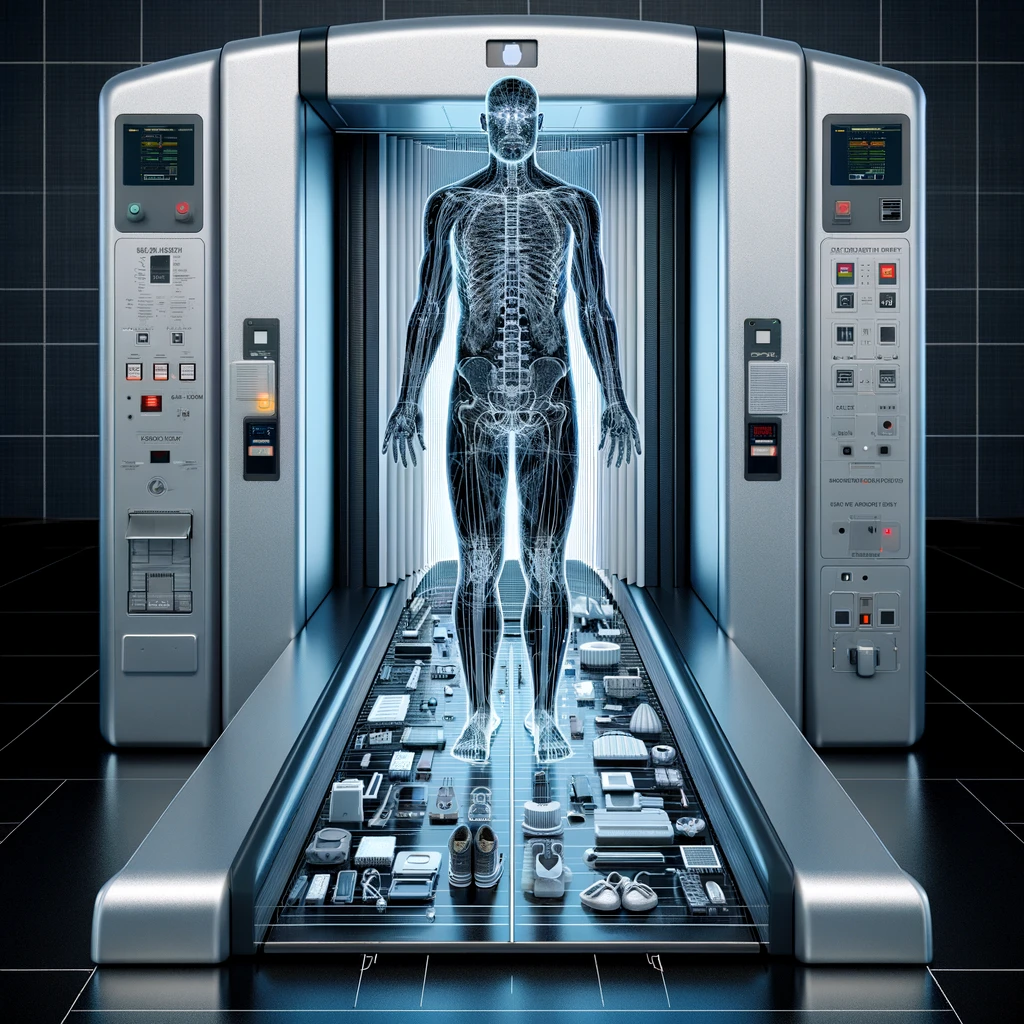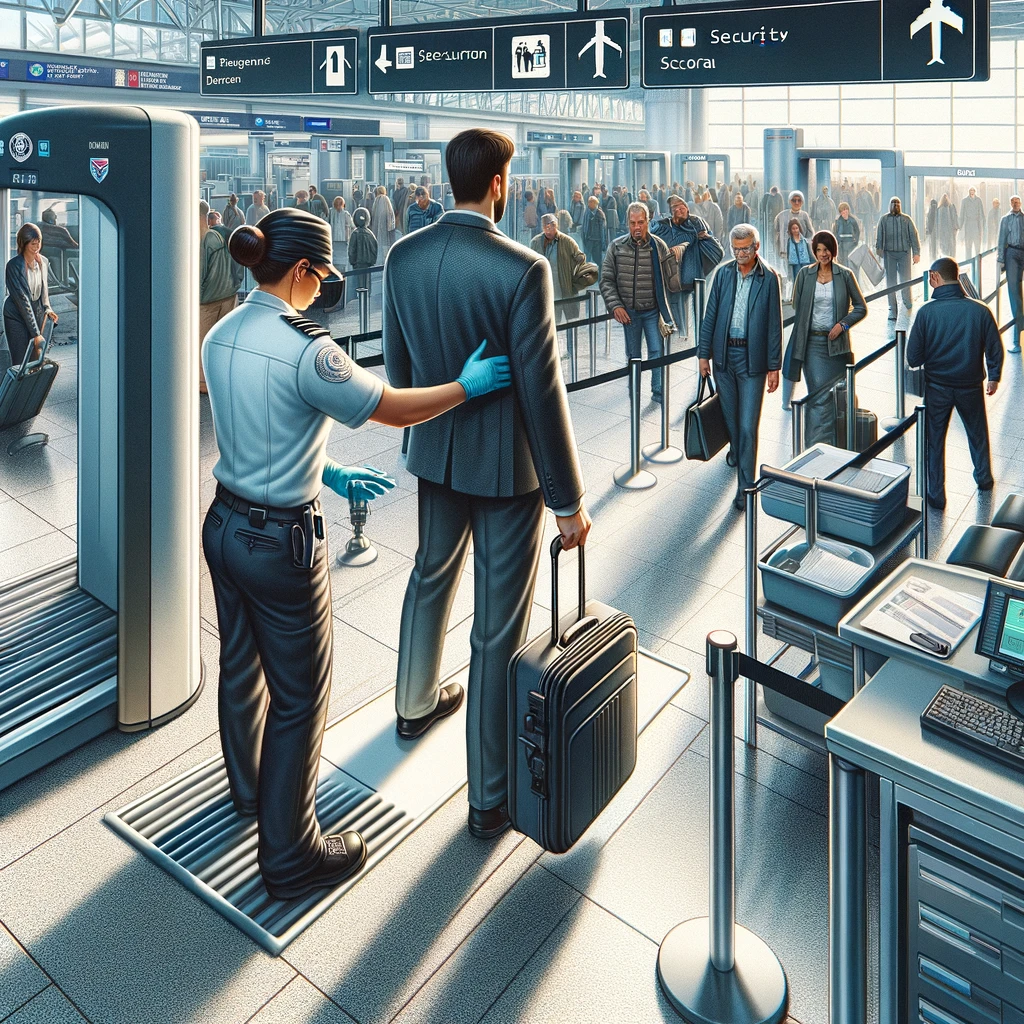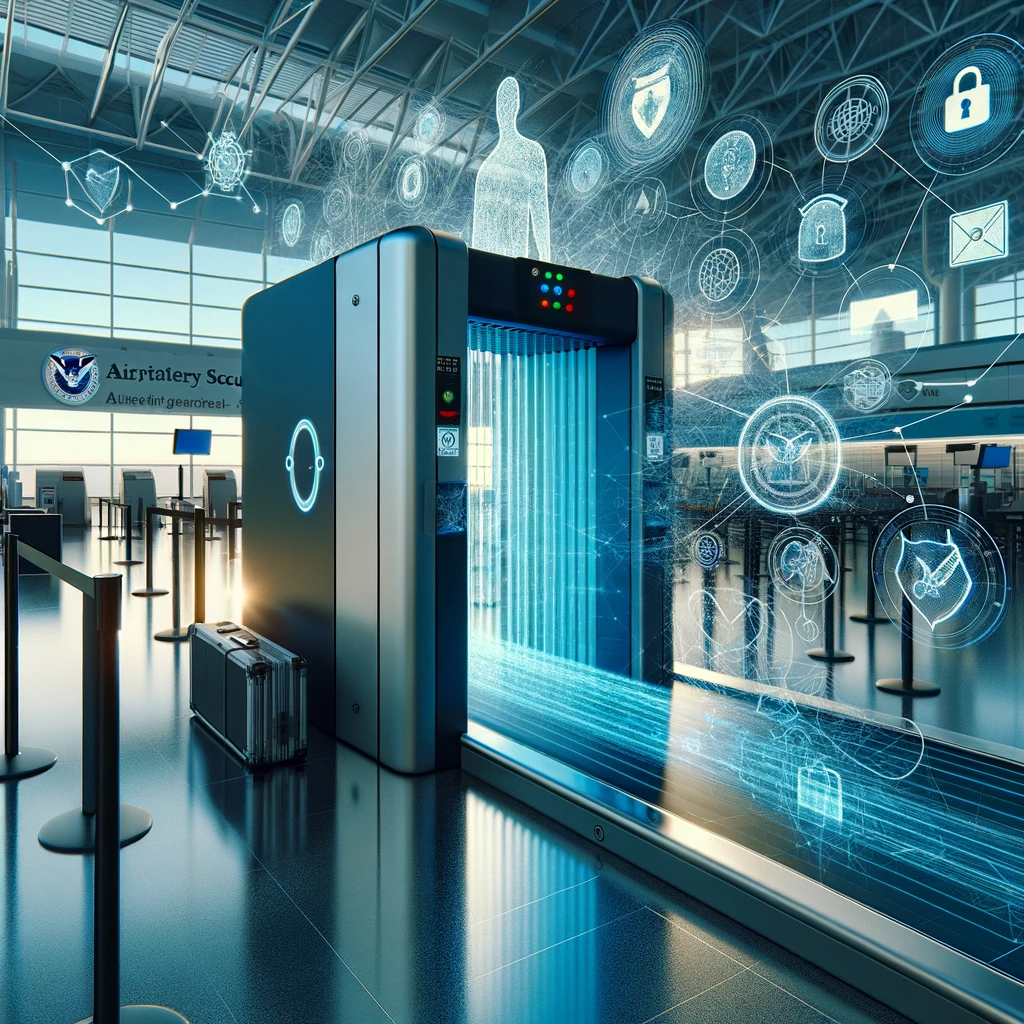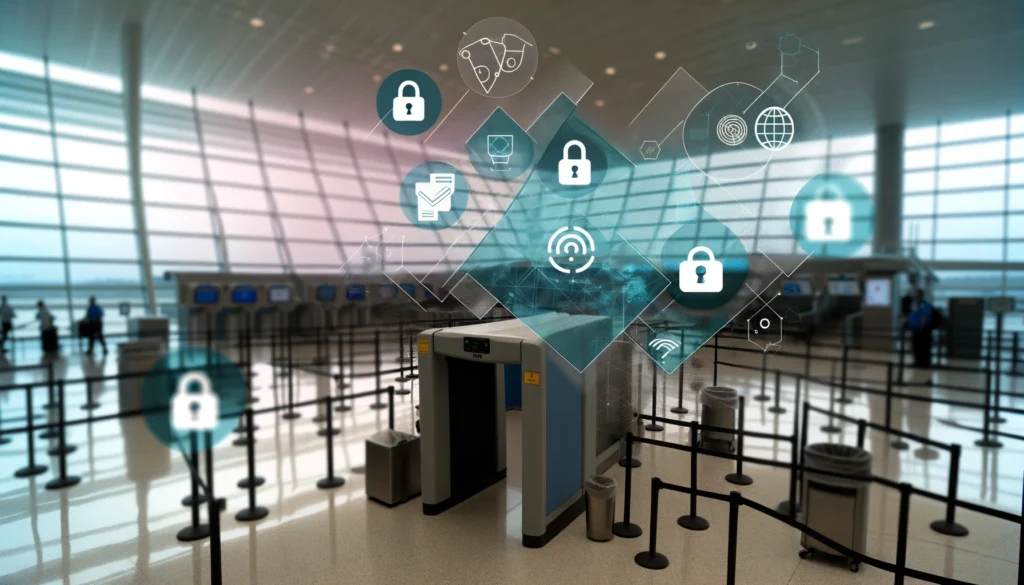In today’s world, the airport experience is synonymous with strict security checks, a testament to our collective dream of safety in the skies. Among all the security checks, full-body scanners are the devices that have provoked a considerable debate about privacy, health, and security regarding these Airport Body Scanners.
In this discussion, we will unravel the layers of these high-tech body scanners guardians of safe travel & will discuss whether full-body scanners are safe, What can airport scanners see on your body, whether can they see you naked, can TSA see your private parts, and much more. For this, we are going to answer each question that ever comes to your mind.
Expanding further into detailed examples, regulatory perspectives, and technological advancements would provide a comprehensive exploration of this issue, enriching the dialogue on the intersection of privacy, safety, and technology in our modern travel experience. With a clear understanding of how body scanners work and their purpose, we can continue to navigate the skies with confidence and peace of mind.
Safety in the Shadows of Surveillance:
When airports across the globe introduced full-body scanners, the primary justification reflected the theme of heightened security. It is this hymn of protection that we must heed as we measure the safety of these devices. Safety, however, extends beyond the narrow scope of threat interception.

How can we safeguard the intangible well-being of individuals when the barrier between public and private is so spectacularly bare? There have been reports of operational errors and, more disconcertingly, the possibility of sensitive scanner images getting breached in the protocol or technological failure.
What are airport body scanners looking for:
The primary goal of the body scanners is to detect items that could pose a threat to flight safety. This includes weapons, explosives, and other prohibited items, like drugs, gold, and much more. Interestingly, scanners are designed to identify materials based on their composition and density, rather than simply the shape of objects. This technology enables the detection of a wide array of potential threats, even if creatively concealed.
A Deeper Look Into Scanners’ Mechanisms: How Do Body Scanners Work?
At first glance, a traveler is demonstrated with full-body scanners – innocuous standing units that seem like harmless archways. They utilize some of our most advanced technologies for examining beneath garments and even skin. Millimeter wave scanners – one of the prevalent interpretations—use radio waves, which are absorbed by water in our blood, the primary component of the human body. This energy is then reflected, producing a three-dimensional image highlighting abnormalities on the body’s surface.
The more traditional backscatter X-ray scanners, TSA Scanner, and Millimeter Wave Scanner technology that is not dissimilar from what is used in medical imaging. These X-rays are not as penetrative as those in a doctor’s office but are potent enough to see through clothing and create a skeletal image of body parts. The person operating the scanner doesn’t see the images but rather a computerized projection of irregularities it considers worthy of further inspection.
What are TSA Scanner & TSA X-Ray:
Transportation Security Administration (TSA) Scanners are modern security devices that are mainly used at airports to detect prohibited items and potential security threats. Such scanners utilize different technologies, such as backscatter X-ray and millimeter wave imaging, a combination of both technologies is known as TSA X-Ray, which allows them to inspect both luggage and clothes without having to physically search for objects and passengers.

With the recent enhancements, the technology permits the presentation of an exact picture of a person’s body and the contents of their bags, thus the detection of non-allowed or hazardous objects, e.g., firearms, explosives, etc, becomes the most easy job. TSA X-ray refers to cutting-edge airport security facilities used to strengthen aviation security and improve the general safety of air travel.
Apart from checking the carried-on bags of passengers, one of the major roles of TSA scanners is to step up the security of airports by discovering forbidden items that the passengers might have hidden in their inner body parts, such as hiding illegal stuff inside the bum or in other private parts of the body.
Automated detection technology is being developed to identify potential travel bag contents by providing a clear end-view of both the inside belongings and any hidden items on a passenger’s body. The implementation of highly sophisticated screening and detection procedures creates quick and non-invasive air searches, which help to ensure that there is no sign of a potentially dangerous item being transported on board and allows flyers and airline crews to be much safer.
TSA Body Scan Images Tampon
A specific point of inquiry pertains to the scanner’s ability to detect items such as a tampon during the screening process. It highlights a broader question of “how sensitive these machines” are. TSA scanners are calibrated to detect anomalies that signify a threat. Personal items, such as tampons, normally do not fall within the scope of security threats and thus typically do not trigger an alarm, so you may carry them with you, depending on your state rules & regulations.
Can TSA See Your Private Parts?
Modern body scanners are designed with privacy in mind, using automated detection and generic imaging to highlight areas of concern without revealing anatomical details. The images generated do not display private parts or provide any form of detailed physical description. TSA agents view a generic outline, ensuring that privacy is maintained throughout the process.
Millimeter Wave Scanner
Comprising a significant portion of the TSA’s technological arsenal, the millimeter wave scanner stands out for its balance between efficacy and privacy. This technology operates on non-ionizing radiation, which offers a health-conscious approach to security screening.
Ever supposed to refuse to go through a body scanner?
Refusing to go through a body scanner at the airport brings forward a cascade of procedures. When a passenger says no am not going through this scanner then this alerts the authorities and, this subjects them to a manual pat-down by TSA agents, a process that is exhaustive and requires the individual to allow additional time for their in-depth screening, as by saying “no” you just make the authorities alarming, that you may be carrying some illegal staff, that’s why you are refusing to go through the scanner. This option highlights the dilemma passengers face between personal privacy and the efficiency of modern technological screening methods.
This makes us come to this point, Why say no ?, just consider it’s for your safety and time saving, If you just keep following the scanning line, then no one will try to bother you, useless if you are carrying some illegal stuff with you, that is the worst case you ever imagine.

Addressing the Safety Questions About Body Scanners:
The deployment of body scanners at airports as a security measure has recently turned out to be one of the most controversial issues because of this technique’s lack of privacy rights, health risks, and effectiveness. Nevertheless, the higher standards in technology and the constant adjustment of the screening procedures are a couple of actions taken by the aviation industry to strike the right balance among the conflicting components. With air travel being a constant mode of transport, it is necessary to stay up-to-date and well-acquainted with airport safety measures as they evolve. Therefore, we will further investigate and discuss some other parts of the issue that remain mysterious.
Are Airport Full Body Scanners Safe?
Health concerns are paramount among the public’s hesitations regarding full-body scanners. Specifically, the millimeter wave scanner, one of the two primary types used in airports, emits electromagnetic radiation. However, research suggests that the energy emitted is significantly lower than that of a mobile phone, indicating minimal health risks. Numerous health agencies corroborated to check the safety of these scanners, suggesting that their operation falls well within the limits of what is considered safe for human exposure.
Are body scanners safe?
As mentioned earlier, modern body scanners use non-ionizing radiation, making them safe for passengers to pass through. However, some concerns have been raised regarding frequent exposure for individuals who travel frequently. The TSA has stated that the level of radiation emitted by these scanners is very low and causes no risk to human health.
What do body scanners see?
A prevalent concern is the level of detail visible in the images produced. At some point, this question will get hitched to your mind while passing through the full-body scanner, Do airport body scanners see you naked? Or What Can Airport Scanners See on Body?
Summarily, airport scanners are fine-tuned to identify potential security threats. Their capability to ‘see through’ clothes is not aimed at invading privacy but at ensuring the collective safety of passengers. The modern version of these scanners and the protocols around their use are a testament to the aviation industry’s commitment to balancing efficacy with ethical considerations.
Early iterations raised privacy concerns due to the level of detail in the images. However, modern scanners use privacy-enhancing software that generates generic avatars, with detected items highlighted for further inspection. This method addresses privacy concerns while maintaining security effectiveness.
What might accidentally set an alarm on a body scanner?
Common misconceptions prevail regarding what may inadvertently trigger an alarm. Everything from clothing with high metal content to carrying certain types of jewelry or even body adornments can set off a scanner alarm. It’s a reminder that while technology has advanced, it still requires human judgment to discern between false alarms and genuine threats.
How do body scanners protect privacy?
To address privacy concerns, modern body scanners use automated detection and generic avatars to highlight areas of concern without revealing personal body part details. Additionally, TSA agents view the images in a separate room to ensure passenger privacy is maintained at all times.
What are the regulations surrounding body scanners?
The usage of body scanners for airport security is regulated by various well-known agencies, like the Department of Homeland Security and the Transportation Security Administration (TSA). These institutions team up to outline and set in place strict machine guidelines for using body scanners to balance the personal privacy and safety of the people.
What advancements have been made in the design of body scanner technology?
For the last few years, substantial progress has been made in body scanner technology, like the enhancement of image quality and the rise in threat detection sensitivity. Furthermore, efforts are constantly being made to develop privacy controls and reduce potential health risks.
Final Thought about Airport Body Scanners:
Conclusively, body scanners have appeared to be valuable in airport security, in the end chasing to bring air travel to the highest safeguard level. Although security and health considerations linger, organized efforts in the aviation sector shall continuously strive to provide equal comfort for all boarding passengers. However, this capability will require constant progress and consideration of the following ethical aspects. Therefore, these scanners will remain an integral part of the public Air transportation system to ensure peace of mind for everyone involved.

Conversationally, let’s keep the line of discussions open and remain up-to-date concerning these elements of air travel security. Together, we will be able to carry on with a sound and fool-proof screening operation while the passengers enjoy their rights and safety. I appreciate you sparing your time to attend this session on Body Scanners. Happy travels!
Disclaimer: Thank you for reading this article on Body Scanners by Wings Over Clouds. We hope that it has provided valuable insights and sparked your further interest in this topic. Let’s continue to prioritize safety while respecting privacy in the world of aviation,

